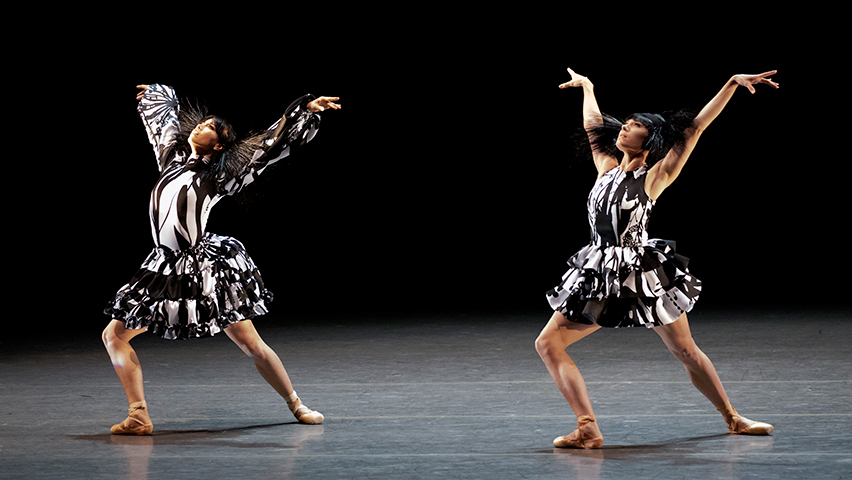“There is only now,” Balanchine said. Choreographer Justin Peck seems to be living in the now, creating one ballet on the heel of another. Principia, his newest piece, premiered on January 31. It does not disappoint.
Once again, Peck collaborated with the composer Sufjan Stevens. Principia contains many layers and contrasts; energetic yet meditative with a sense of community amongst the various group of dancers. There is constant movement, dancers exit and reenter the stage; groups form and dissipate.
Clusters of dancers gathers into closed groups, like a bud, when touched they unfold to reveal a dancer who sets the group into motion, This action is repeated throughout the piece.
What is the meaning in all this? The title is perplexing as it may refer to Sir Isaac Newton’s book of the same name, which is a study on the law of motion and gravitation. The dancers seem to be subject to gravitational pull, there is an attraction between the groups in one moment, then they move on to form unrelated relationships.
Principia is full of wonderful ensemble work which soars with energy. Pecks’ choreography is a sort of tag game with each tag leading to a burst of choreography energy, propelled by speed and a competitive edge. It is surprising but fitting that at the end of the piece the final message is of the dancers in a line holding hands sending a powerful message that it is possible to be different yet unified.

The Runaway exploded onto the stage and never let up. The costumes are abstract and animalistic, striking In black and white. Even more so were the headdresses which had a raffia look to them, and added an interesting element to the overall effect. There is much to like and admire about The Runaway.
Kyle Abraham’s choreography is exciting and daring, pushing the dancers out of their familiar territory of ballet and into the world of rap and hip-hop. Their adaptation of his style (modern and hip-hop) was remarkable. Even more remarkable was the New York City Ballet’s dancers complete immersion into his style.
The piece opens with Taylor Stanley standing with one leg extended in the air, a position he holds until gasps could be heard from the audience. And still he held his balance. It was masterful, from then forward he was a force to be reckoned with. There were many exuberant dances to music by Nico Muhly, Kanye West, Jay-Z and James Blake. What was especially notable was the brilliant execution of this rap-ballet by the the New York City Ballet dancers.

William Forsythe’s Herman Schmerman piece is complex in an intriguing manner. It could be seen as two pieces in one. The first part is an ensemble work performed in all black with three women and two men. The dancers execute a set of phrases then casually walk off the stage only to reappear to perform another mini dance.
The second part is a duet between Tiler Peck and Tyler Angle. There is a lot of intricate partnering in this piece about a relationship. Peck takes full command of the duet and is beautiful to watch. Her performance displayed strong musicality and technical execution.
New Combinations displays a strong sense of the present, and of a company moving forward during transitional times, as the company conducts a search for new leadership after the resignation of Peter Martins. “There is only now,” Balanchine said, and the company is following his words as it moves into the future.


